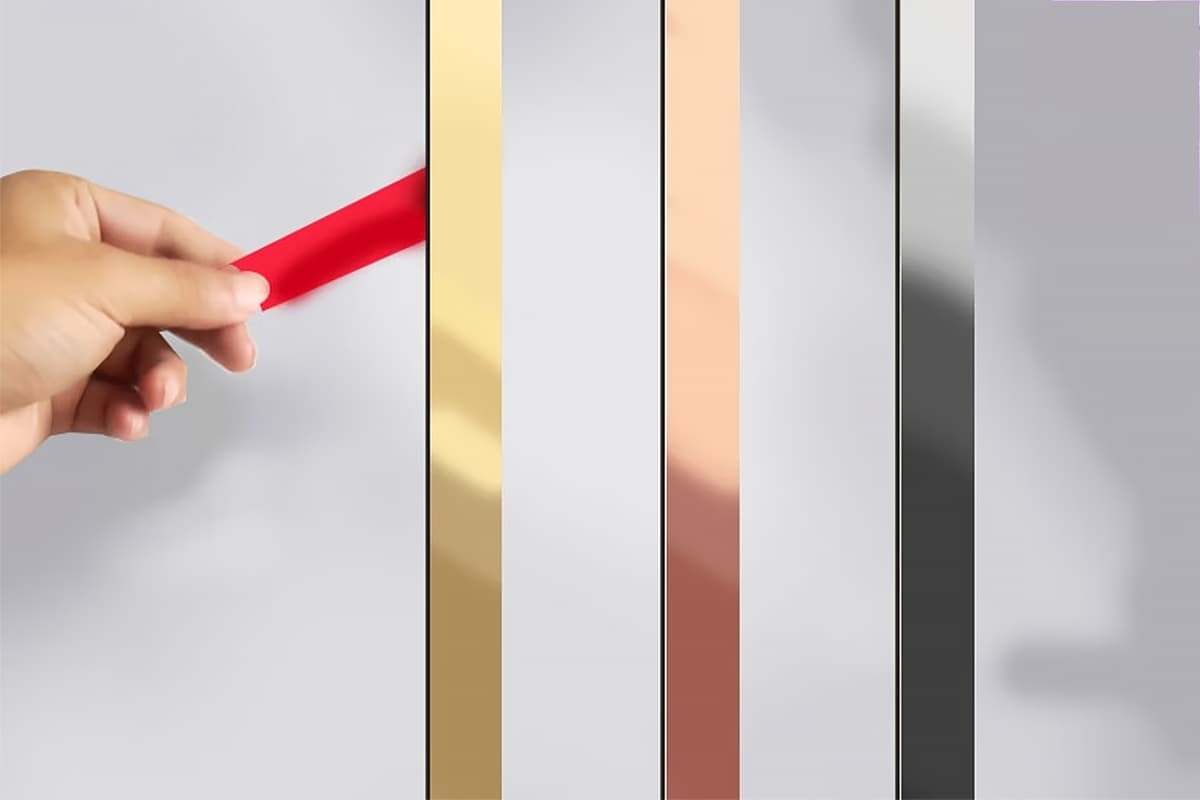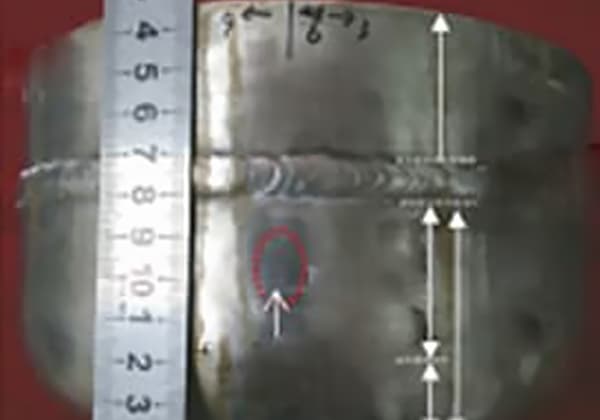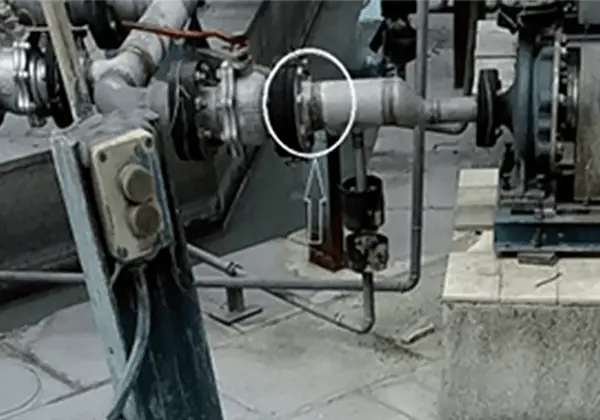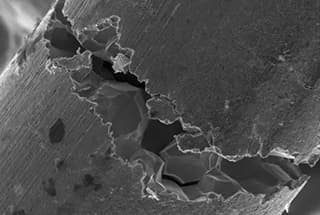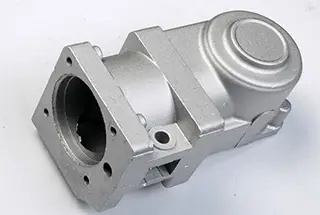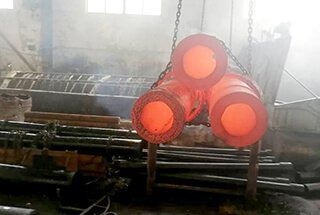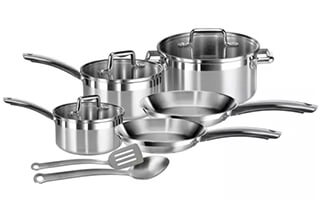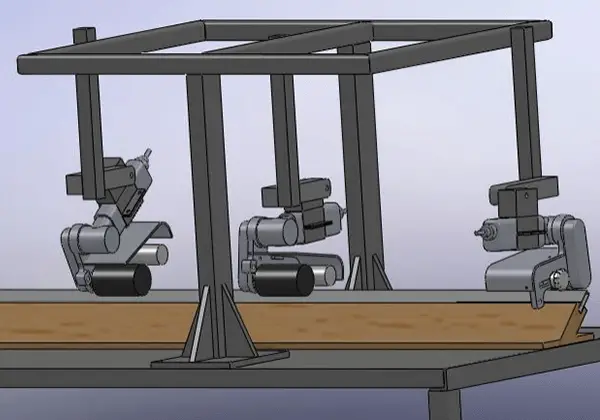
In this article, we break down the mechanical properties of SUS304 and SUS316 screws, including their tensile strength, yield strength, and torque. Learn how these tiny components withstand immense pressure and why they are crucial in various applications. Get ready to unravel the secrets behind their strength!
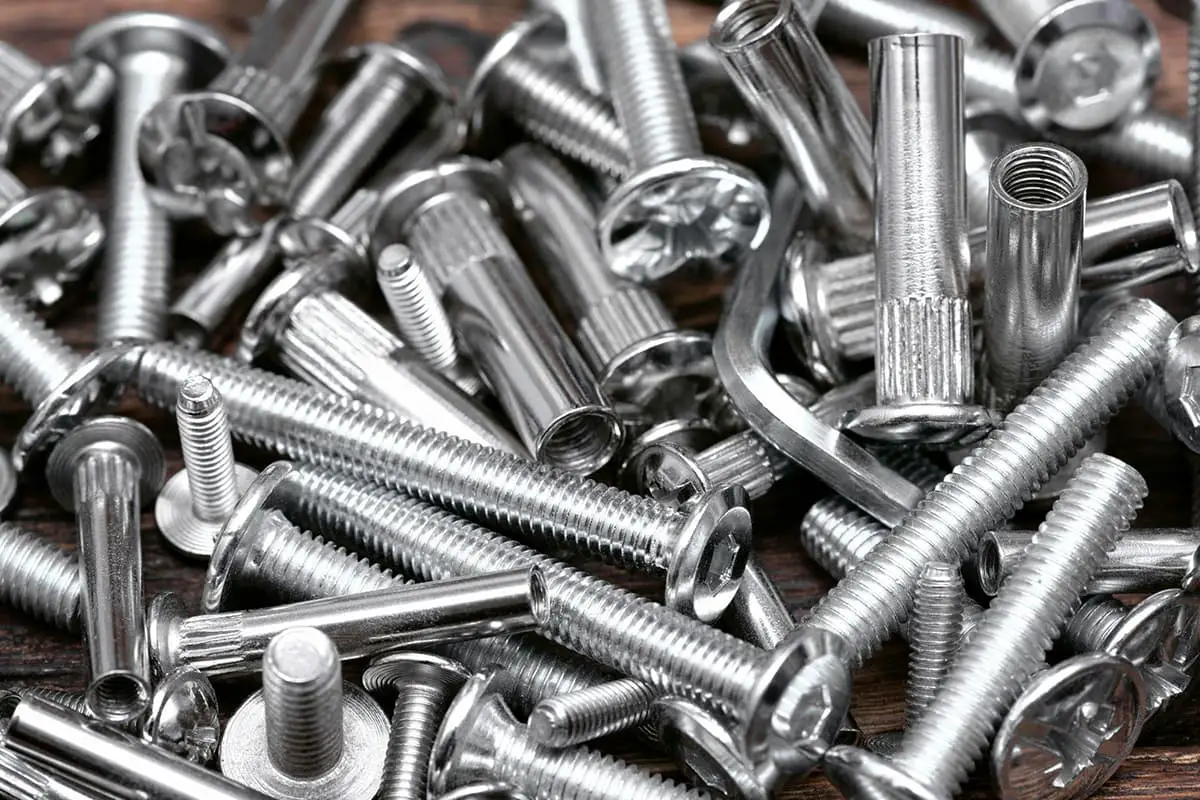
The performance standards of stainless steel screws, as discussed in this article, do not refer to their specific size regulations.
Instead, these performance standards refer to various mechanical properties, including material composition (chemical composition), tensile strength (the amount of kilogram force it can bear), failure torque (the amount of torque needed to break it), guaranteed stress, and yield strength, among others.
This article mainly explains the performance of stainless steel screws produced using austenitic stainless steel 304 and 316 as raw materials.

This article is only aimed at peers who are new to the use of stainless steel fasteners, as well as purchasing personnel and technical personnel of companies that use stainless steel screws. We have simplified the tedious explanations in national standards, added parts not mentioned in national standards, and briefly explained them in conjunction with industry rules.
This is done to enable viewers to quickly browse and understand the relevant knowledge. In other words, it is not so rigorous. If you are a senior personnel, this document may be what you are looking for: GB/T3098.6-2000 Stainless Steel Screw Test Standard.
Speaking of materials, the stainless steel screw materials we commonly use are divided into two types, SUS304 and SUS316. Of course, there is also the 400 series, namely SUS410 or SUS416. This falls within the range of stainless iron, which we will not discuss.
There are also some special requirements, such as 316L, 304L, etc. Since they are rarely used, we will not discuss them here. As for other series such as the 201 series, the 668 series, those are deceptive tricks and will not be mentioned.
The chemical composition of SUS304 is as follows:
| Standard | GB/T1220-1992 | Material Name | SUS304 | ||||||
| Chemical Test | CHEMICAL TESTING | ||||||||
| Instrument Name | Cu Direct-Read Spectrometer | ||||||||
| Element Name | C | Mn | Si | P | S | Ni | Mo | Cu | Cr |
| Standard Range | ≤0.025 | ≤1.78 | ≤0.3 | ≤0.027 | ≤0.02 | 8.00-10.5 | ≤0.13 | ≤1.96 | 17.00-19.00 |
| Physical Properties | tesile strength | elongation | hardness | ||||||
| Actual Value | 650N/mm | 40 | HRC14 | ||||||
The chemical composition of SUS316 is as follows:
| 316 Stainless Steel Chemical Composition Table | |||||||||
| Standard | JIS H3250-1992 | Test Sample Name | SUS316 | ||||||
| Chemical Test | CHEMICAL TESTING | ||||||||
| Instrument Name | tensile strength | ||||||||
| Element Name | (C) | (Mn) | (Si) | (P) | (S) | (Ni) | (Mo) | (Cu) | (Cr) |
| Specimen Composition | 0.08 | ≤2.00 | ≤1.00 | ≤0.045 | ≤0.030 | 10.00~14.00 | 2.00~3.00 | / | 6.00~18.00 |
| Physical Properties | tesilestrength | elongation | Yield Strength(Mpa) | ||||||
| Actual Values | 665N/mm | 40 | |||||||
The table above shows that the main difference between 304 and 316 lies in their nickel and chromium content, with 316 being slightly higher.
Commonly, we see head markings on screws such as:
These represent the performance grades of stainless steel screws. Simply put:
So, what does A4-70 mean?
A4-70 also represents 316-grade material, but the tensile strength is not 800, but 700N/mm2. You read that right, the standard SUS316 hexagonal screw is A4-70 grade, only SUS316 nuts (of course, excluding thin nuts) can reach A4-80. That is to say, not all 316 fasteners are 80-grade.
Similarly, not all 304 screws can reach the 70-grade, for example, M4 and smaller screws cannot reach the 70-grade, which is why A2-50 exists.
So, what kind of screws use the A2-70 standard, and what kind of screws use the A2-80? The national standard does not specify this. If you are not a nitpicking scholar, I can post the industry’s default performance grade application standards as follows:
| Material | Corresponding Level | Application |
| SUS304 | A2-50 | Common Machine Screws, Bolts below M5 |
| A2-70 | Bolts and Nuts below M24, Nuts | |
| SUS316 | A4-70 | Bolts below M24 |
| A4-80 | Bolts and Nuts below M24 |
Here is the standard list depicting the tensile strength, yield strength, elongation, and guaranteed stress of stainless steel screws of various grades:
(Reference: GB/T3098.6-2000 test standard, applicable throughout)
| Category | Performance Level | Thread Diameter | Tensile Strength | Yield Strength (Mpa) | Elongation | Guaranteed Stress |
| A2 | 50 | ≤39 | 500 | 210 | 0.6d | 500 |
| A2A4 | 70 | ≤24 | 700 | 450 | 0.4d | 700 |
| A4 | 80 | ≤24 | 800 | 600 | 0.3d | 800 |
The above table specifies the range of thread diameters. This means that for diameters exceeding this range, there are no regulations set by the national standards, and it would require negotiation between the supplier and the demander.
Oh, right, it seems the table above is missing the standard for destructive torque, which is commonly referred to as “how much torque”. The standard is as follows:
| Thread | Performance Level | Performance Grade | ||
| A2-50 | A2(A4)-70 | A4-80 | ||
| Destructive Torque | ||||
| M1.6 | A2-50 A2-70 A4-70 A4-80 | 0.15 | 0.2 | 0.24 |
| M2 | 0.3 | 0.4 | 0.48 | |
| M2.5 | 0.6 | 0.9 | 0.96 | |
| M3 | 1.1 | 1.6 | 1.8 | |
| M4 | 2.7 | 3.8 | 4.3 | |
| M5 | 5.5 | 7.8 | 8.8 | |
| M6 | 9.3 | 13 | 15 | |
| M8 | 23 | 32 | 37 | |
| M10 | 46 | 65 | 74 | |
| M12 | 80 | 110 | 130 | |
| M16 | 210 | 290 | 330 | |
Essentially, that concludes the description of the performance of 304 and 316 series stainless steel screws.
The above torque standards are easy to understand. For instance, what is the torque value for a SUS304 hexagonal screw M6*25?
1. First, refer to the performance grade standards above, it belongs to the A2-70 level.
2. Refer to the torque standard, M6 corresponds to 13N.M.
So, what is the tensile parameter of a SUS304 hexagonal screw M6*25?
The astute among you will notice something amiss. The “tensile strength, yield strength, elongation, guaranteed stress standard” above does not directly provide parameters for specific specifications. This requires calculation on your own.
Speaking of calculations, I can imagine you’re groaning — even if you’re a woman — because it involves the effective stress cross-sectional area of each specification of screw.
Well, I might as well calculate it all for your reference.
There’s a formula for calculating the cross-sectional area of a screw, which is as follows:
As=0.7854*(d-0.9382d)2
In the above formula:
The table showing the cross-sectional areas of common threads (here referring to the stress-bearing cross-sectional areas) is as follows:
| Thread Specification | Nominal Diameter (mm) | Pitch | Cross Sectional Area (mm²) |
| M1.4 | 1.4 | 0.3 | 1.0 |
| M1.7 | 1.7 | 0.35 | 1.5 |
| M2.0 | 2 | 0.4 | 2.1 |
| M2.3 | 2.3 | 0.4 | 2.9 |
| M2.5 | 2.5 | 0.45 | 3.4 |
| M3.0 | 3 | 0.5 | 5.0 |
| M3.5 | 3.5 | 0.6 | 6.8 |
| M4.0 | 4 | 0.7 | 8.8 |
| M4.5 | 4.5 | 0.75 | 11.3 |
| M5.0 | 5 | 0.8 | 14.2 |
| M6.0 | 6 | 1 | 20.1 |
| M7.0 | 7 | 1 | 28.9 |
| M8.0 | 8 | 1.25 | 36.6 |
| M9.0 | 9 | 1.25 | 48.1 |
| M10 | 10 | 1.5 | 58.0 |
| M11 | 11 | 1.5 | 72.3 |
| M12 | 12 | 1.75 | 84.3 |
| M14 | 14 | 2 | 115.4 |
| M16 | 16 | 2 | 156.7 |
| M18 | 18 | 2.5 | 192.5 |
| M20 | 20 | 2.5 | 244.8 |
| M22 | 22 | 2.5 | 303.4 |
| M24 | 24 | 3 | 352.5 |
| M27 | 27 | 3 | 459.4 |
| M30 | 30 | 3.5 | 560.6 |
| M33 | 33 | 3.5 | 693.6 |
| M36 | 36 | 4 | 816.7 |
| M39 | 39 | 4 | 975.8 |
The tensile strength, yield strength, and proof stress standards for stainless steel screws of grades A2-50, A2-70, A4-70, A4-80, etc. can be calculated with the cross-sectional area provided.
Here are the parameters for A2-70 and A2-50:
| Thread Specifications | Parameters of SUS304A2-50 and A2-70 Grade | ||
| Tensile Strength | Yield Strength (N) | Maximum Pull-out Force (N) | |
| M1.4 | 500MPa (A2-50) | 206 | 491 |
| M1.7 | 310 | 739 | |
| M2.0 | 435 | 1037 | |
| M2.3 | 611 | 1455 | |
| M2.5 | 712 | 1695 | |
| M3.0 | 1056 | 2515 | |
| M3.5 | 1423 | 3388 | |
| M4.0 | 1844 | 4389 | |
| M4.5 | 2377 | 5660 | |
| M5.0 | 700MPa (A2-70) | 6382 | 9928 |
| M6.0 | 9056 | 14086 | |
| M7.0 | 12987 | 20202 | |
| M8.0 | 16474 | 25626 | |
| M9.0 | 21653 | 33683 | |
| M10 | 26095 | 40593 | |
| M11 | 32523 | 50591 | |
| M12 | 37920 | 58987 | |
| M14 | 51948 | 80808 | |
| M16 | 70501 | 109668 | |
| M18 | 86613 | 134731 | |
| M20 | 110158 | 171356 | |
| M22 | 136530 | 212380 | |
| M24 | 158627 | 246753 | |
| M27 | 500MPa (A2-50) | 96475 | 229703 |
| M30 | 117723 | 280294 | |
| M33 | 145646 | 346777 | |
| M36 | 171512 | 408362 | |
| M39 | 204908 | 487877 | |
The following are the performance parameter standards for A4-70 and A4-80:
| Thread Specifications | Parameters of SUS316 A4-70 Grade | Parameters of SUS316 A4-80 Grade | ||||
| Tensile Strength | Yield Strength (N) | Maximum Pull-out Force (N) | Tensile Strength | Yield Strength (N) | Maximum Pull-out Force (N) | |
| M1.4 | 700MPa (A4-70) | 442 | 688 | 800MPa (A4-80) | 590 | 786 |
| M1.7 | 665 | 1034 | 887 | 1182 | ||
| M2.0 | 933 | 1451 | 1244 | 1659 | ||
| M2.3 | 1309 | 2037 | 1746 | 2328 | ||
| M2.5 | 1526 | 2374 | 2034 | 2713 | ||
| M3.0 | 2264 | 3522 | 3019 | 4025 | ||
| M3.5 | 3049 | 4743 | 4065 | 5420 | ||
| M4.0 | 3950 | 6145 | 5267 | 7023 | ||
| M4.5 | 5094 | 7924 | 6792 | 9056 | ||
| M5.0 | 6382 | 9928 | 8510 | 11346 | ||
| M6.0 | 9056 | 14086 | 12074 | 16099 | ||
| M7.0 | 12987 | 20202 | 17316 | 23088 | ||
| M8.0 | 16474 | 25626 | 21965 | 29287 | ||
| M9.0 | 21653 | 33683 | 28871 | 38495 | ||
| M10 | 26095 | 40593 | 34794 | 46392 | ||
| M11 | 32523 | 50591 | 43363 | 57818 | ||
| M12 | 37920 | 58987 | 50560 | 67413 | ||
| M14 | 51948 | 80808 | 69264 | 92352 | ||
| M16 | 70501 | 109668 | 94001 | 125335 | ||
| M18 | 86613 | 134731 | 115484 | 153978 | ||
| M20 | 110158 | 171356 | 146877 | 195836 | ||
| M22 | 136530 | 212380 | 182040 | 242720 | ||
| M24 | 158627 | 246753 | 211502 | 282003 | ||
| M27 | 206733 | 321585 | 275644 | 367525 | ||
| M30 | 252264 | 392411 | 336353 | 448470 | ||
| M33 | 312099 | 485488 | 416132 | 554843 | ||
| M36 | 367525 | 571706 | 490034 | 653379 | ||
| M39 | 439089 | 683027 | 585452 | 780603 | ||

